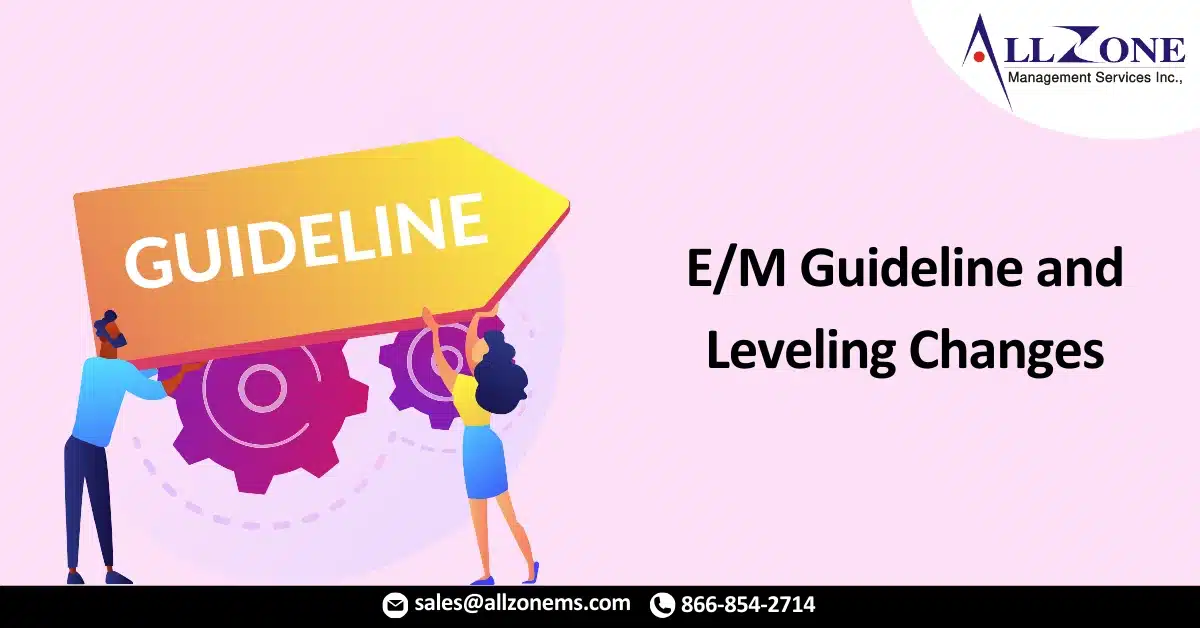Providers need a mechanism to be accurately reimbursed for the time and effort that they expend in providing care. Evaluation and Management (E/M) leveling has been the standard method in which to provide appropriate, defensible payments for services.
However, it has been successfully argued that the 1995 and 1997 E/M guidelines in place today are overly complex and incentivize or reward the quantity of documentation over the quality. AMA CPT® has issued a new set of guidelines for 2021 intending to help simplify E/M leveling for office and other outpatient services.
For 2021, CMS will move from a points-based system for history, exam and medical decision making, to a medical necessity-based system. Broadly stated, under ‘95/’97 rules, for each service provided, there is an assigned point value: the more points, the better the level. Medical decision making has always been the arbiter, though; a great exam and history input will not get top reimbursement for a simple case of postnasal drip. For 2021, the leveling methodology will change; the new rules require that documentation be appropriate to support the patient’s diagnosis, and CMS will move from a points-based system to a medical necessity-based system.
According to HealthCare.gov, medically necessary services are defined as “health care services or supplies that are needed to diagnose or treat an illness, injury, condition, disease, or its symptoms—and that meet accepted standards of medicine.”
It is essential that providers understand that the new rules do not constitute a diminution in documentation or a reduction of supporting facts for a given diagnosis. In fact, AMA CPT® and CMS are raising the bar on the quality of documentation for a given diagnosis. This can result in reduced documentation needs and more focus on supporting the medical necessity of the diagnosis.
When you look at best practices for E/M leveling and compliance, it’s crucial to understand that your E/M documentation is being reviewed by many different tools and interpretations of the current (CPT®, 95, 97) guidelines. What might be acceptable for a private payer will not pass a Medicare review. At this time, most healthcare systems have adopted the CMS guidelines and rules as outlined by their Medicare Administrative Contractor (MAC). The importance of following the MAC guidance is that each MAC has developed education and tools based on their interpretation of the guidance provided by CMS. It is important to provide physicians, non-physician providers, and coding staff with E/M education specific to the MAC rules during the onboarding process and to have a process in place to provide any updates or changes to guidelines via live training or internal communiques.
Due to evolving technology and the use of EHRs, E/M templates should be reviewed on a regular basis. Many over-coding issues can be traced to the poor design of templates that auto-populate or pull information from previous visits without having the provider validate that it is pertinent to the service.
Routine reviews of E/M documentation are essential. Every compliance plan should have a program outlined to review provider documentation on a regular schedule to evaluate the effectiveness of training and ensure templates are being used and edited correctly. Annual reviews are recommended with more frequent inspections of the outliers.
There is help on the horizon. The 2021 E/M changes to office and other outpatient services were meant to ease the documentation burden on providers. When you compare the changes side by side, the new focus is clearly on medical decision making.
| AMA CPT® 2020 | AMA CPT® 2021 |
| 99214 – Office or other outpatient visit for the evaluation and management of an established patient, which requires at least 2 of these 3 key components: A detailed history; A detailed examination; Medical decision making of moderate complexity. Counseling and/or coordination of care with other physicians, other qualified health care professionals, or agencies are provided consistent with the nature of the problem(s) and the patient’s and/or family’s needs. Usually, the presenting problem(s) are of moderate to high severity. Typically, 25 minutes are spent face-to-face with the patient and/or family. | 99214 – Office or other outpatient visit for the evaluation and management of an established patient, which requires a medically appropriate history and/or examination and moderate level of medical decision making. When using time for code selection, 30-39 minutes of total time is spent on the date of the encounter. |
First noticeable change: there will no longer be a requirement for a specific level of history and exam. Providers have often felt forced into documenting items of history and/or exam they felt were not pertinent to a visit in order to support the E/M level that was medically necessary and appropriate. Now, history and exam need only be relevant and pertinent based on the reason for the visit. Their efforts will now focus the level on medical decision or time as defined by the code description.
On November 1, 2019, the AMA CPT® published an article regarding the changes that provided the CPT® Evaluation and Management (E/M) Office or Other Outpatient, Prolonged Services Code and Guideline Changes and E/M Office Revisions Level of Medical Decision Making (MDM) table that will be included in the 2021 CPT® book. These new guidelines and table will standardize and level the playing field for all payers by providing clear guidance and clear definitions for the elements listed in the new medical decision-making table:
- Time
- Services reported separately
- Number and complexity of problems addressed at the encounter
With the proper planning, education and implementation, this change will have a positive impact on both the physician workload and quality of patient care.
For More Information: https://www.physicianspractice.com/view/2021-e-m-guideline-and-leveling-changes

